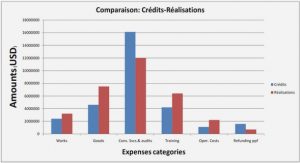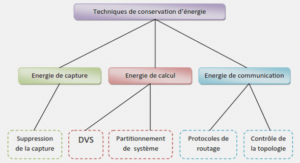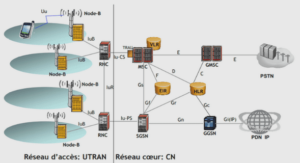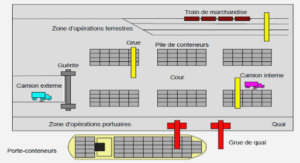Spinal fixation using pedicle screws
Prevalence and success
Use of pedicle screws as spinal internal fixation was introduced in the early 1970s. After the statements reported by American Spine Society in 1993 and 1996, clinical application of pedicle screws became to widespread acceptance by orthopedic surgeon. The pioneering, proceeding and evolution are described by review articles (Gaines Jr, 2000). Pedicle screw fixation is currently used as the standard surgical treatment for spinal fractures (Cheng et al., 2013; Sanderson et al., 1999; Vaccaro et al., 2003), deformities (Cheung, Lenke and Luk, 2010; Hasler, 2013), or degenerative changes (Boos and Webb, 1997; Resnick et al., 2005). Vertebral fracture can occur in traffic accidents, fall, or in osteoporotic individuals with low bone stock as the result of everyday activities such as forward flexion or lifting a light object (Myers and Wilson, 1997; Silva, 2007). Providing spinal fusion and stability, pedicle screw fixation is used in spinal fractures to prevent abnormal spinal curvature (e.g. kyphosis) or loss of height. Pedicle screws used for scoliotic curve correction in lumbar and thoracic spines have shown to help improving sagittal balance.
Several in vitro studies have indicated that pedicle screws provide higher pullout strength, shorter fusion segment allowing the maximum motion and higher stability through three column fixation in comparison to other internal fixation constructs such as sublaminar wires and hooks. Pedicle screws were reported to better control the vertebral rotation than hook constructs (Kim et al., 2004; Lenke et al., 2008; Suk et al., 1994). Wire and cable constructs require sublaminar dissection, although it is simple to apply, does not require intraoperative fluoroscopy and increase the torsional and lateral bending stability when used in conjunction with Harrington rods (Asher et al., 1988). Hooks, nevertheless, are recommended for use in small size pedicles to allow engagement by screws or in fractured pedicles. Margulies et al. (1997) have shown that hook-screw construct increased torsional spinal stiffness in synthetic vertebrae while there is no additional benefit in sagittal or coronal plane. Tai et al. (2014) compared different combinations of hook and screw in porcine spines and concluded to the maximum fixation strength for pedicle screws. Comparing hooks, wires, and pedicle screws in spinal cadaver models, a study by Hitchon et al. have recommended significant increase in pullout strength for pedicle screws (Hitchon et al., 2003).
Pedicle screws
Pedicle screw types
Different pedicle screw types are available with different clinical utilities. so we used polyaxial (PA) and monoaxial (MA) pedicle screws. Both types allow attachment to a longitudinal member (a plate or a rod).
MA pedicle screws allow a higher corrective force to translate and derotate the vertebrae in spinal curve correction (Lenke et al., 2008). However, adjustments of screw and rod position relative to curved spine and rotated vertebrae are limited. Variation in pedicle screw placement in each vertebra may result in misalignment of all screw head slots . This would consequently cause undesirable intervertebral shear and axial force (Wang et al., 2011).
The limitation of MA pedicle screws resulted in development of PA pedicle screws which have improved the positioning of screw in each vertebra relative to the rod. A pivoting post and a universal joint with a locking mechanism allow translation of instrumented vertebrae at any distance and angle to the rod . This mechanism provides a relative motion in three degree-of-freedom (DOF) and suggests more flexibility in attaining the final configuration of the spine (Wang et al., 2011).
It should be noted that vertebrae experience a high corrective force in spinal deformity corrections which results in higher risks of damage at bone-screw interface, screw pullout or vertebral fracture. Flexible PA pedicle screws allow a better control on correction forces and improve the failure risk management. They are consequently advantageous for osteoporotic patients with weak bone quality (Wang et al., 2011).
Pedicle screw material
Stainless steel and titanium screws are both manufactured and used. Titanium is a low density, hard metal showing a good biocompability and corrosion resistance. Medical grade titanium alloy is regularly used for rods, plates, and pedicle screws (Hirano et al., 1997). Titanium implants result in fewer artefacts than other metals (in particular stainless steel) in MRI and CT images (Ebraheim et al., 1994; Petersilge et al., 1996).
Pedicle Screw Size
The size of pedicle screw is selected based on vertebral level and pedicle geometry which can be determined using QCT scan. Typical pedicle screw sizes for the human thoracic spine range from 4 to 6 mm in diameter and 25 to 50 mm in length. The range for lumbar spine is 6 to 7.5 mm in diameter and 40 to 55 mm in length (Parker et al., 2011).
Pedicle screw design
The bone-screw interface plays a significant role in construct fixation strength. Therefore, altering the pedicle screw parameters could significantly affect the fixation strength of the pedicle screw. The effective design factors include shaft design (conical or cylindrical (Aerssens et al., 1998; Hsu et al., 2005; Kim, Choi and Rhyu, 2012), cannulated (Inuid et al., 2004; Lin, Tsai and Chang, 1997; Tai et al., 2014), expandable (Cunningham et al., 2002; Yazici et al., 2006)), screw major diameter and core diameter (Chapman et al., 1996; Chatzistergos, Magnissalis and Kourkoulis, 2010; Inceoglu, Ferrara and McLain, 2004; Kim, Choi and Rhyu, 2012; Zhang, Tan and Chou, 2004), thread depth and pitch (Kim, Choi and Rhyu, 2012; Krenn et al., 2008; Zhang, Tan and Chou, 2004), and the symmetrical or asymmetrical threads (Mehta et al., 2011).
The cylindrical and conical types of screw designs, have significantly different purchase behaviour in-vitro (Inceoglu, Ferrara and McLain, 2004). A small increase in minor diameter of conical screw was observed to have a better screw-bone purchase compared to contralateral control within the same vertebra. This behaviour was justified by pedicle morphology which is slightly conical dorsally and thus, conical screws with large screw diameter in proximal pedicle can more successfully accommodate in pedicle. The enhanced screw-bone interaction in conical designed screw was confirmed biomechanically by greater torque, pullout force and stiffness in comparison to cylindrical screws.
The thread design alteration as asymmetric progressive trapezoidal form also has depicted greater insertional torque than traditional V-shaped threads in calf vertebrae (Inceoglu, Ferrara and McLain, 2004). Increased insertional torque is owing to special thread design in which the progressive narrowing flutes forming decreased pitch length compress a progressively smaller volume of trabecular bone as screw nears full insertion. Trapezoidal threads also increase the torque by creating greater fraction through inclined contact with cortical surface area and compress trabeculae toward cortex whereas the V-shaped threads cut and groove the trabecular bone. However, such benefit has not been observed for pullout force and stiffness by the authors. These results describe that torque alone is not a good predictor of fixation strength particularly in non-standard screw and thread designs. These unexpected outcomes arise from anisotropic properties of the bone since orientation of trabecular bone yields different mechanical properties in different directions. In other words, frictional resistance between screw threads and bone lead to radial compression of trabeculae during insertional torque. Nevertheless, pullout is the result of trabecular failure in shear in axial direction. Mehta et al. (2011) have investigated the effect of different thread designs on pedicle screw fixation strength in osteoporotic cadaveric vertebrae . Thick and thin crest threads demonstrated a greater torque comparing to standard screw design. However, their pedicle screws with equal diameters presented similar pullout properties in BMD dependent manner. Their findings also support the clinical assumption that higher torque value lead to increased screw bone interaction induced by friction between the threads and can predict pedicle screw fixation strength.
|
Table des matières
INTRODUCTION
CHAPTER 1 LITERATURE REVIEW
1.1 Human spine
1.1.1 Functional anatomy of the spine
1.1.2 Specific anatomy of vertebrae
1.1.3 Vertebral bone quality
1.1.4 Vertebral bone mechanical properties
1.2 Porcine spine
1.2.1 Functional anatomy of porcine spine
1.2.2 Bone quality of porcine vertebrae
1.2.3 Use of porcine specimens in spinal research
1.3 Synthetic bone surrogates
1.4 Spinal fixation using pedicle screws
1.4.1 Prevalence and success
1.4.2 Pedicle screws
1.4.3 Pedicle screw fixation technique
1.4.4 Supplemental techniques to pedicle screw fixation
1.5 Biomechanical evaluation of pedicle screws fixation
1.5.1 Complications associated with pedicle screw fixation
1.5.2 Factors governing the fixation strength
1.5.3 Test methods to measure pedicle screw fixation strength
CHAPTER 2 HYPOTHESIS AND OBJECTIVES
2.1. Hypotheses and specific objectives
CHAPTER 3 MATERIALS AND METHODS
3.1 Method overview
3.2 Protocol 1: Experimental study on synthetic bone surrogates
3.2.1 Synthetic bone surrogates preparation
3.2.2 Experimental apparatus
3.2.3 Mechanical testing
3.2.3.1 Indentation test
3.2.3.2 Insertional torque measurement
3.2.3.3 Toggling test
3.2.3.4 Pullout test
3.2.3.5 Data analysis
3.3 Protocol 2: Experimental study on porcine vertebrae
3.3.1 Specimens preparation
3.3.2 Experimental apparatus
3.3.3 Biomechanical testing
3.3.3.1 Indentation test
3.3.3.2 Insertional torque measurement
3.3.3.3 Toggling test
3.3.3.4 Pullout test
3.3.3.5 Data analysis
CHAPTER 4 RESULTS
4.1 Experimental study on synthetic bone surrogates
4.1.1 Indentation force, screw insertional torque, pullout force and
stiffness with and without toggling
4.1.2 Effects of toggling mode and density on pullout force and stiffness
4.1.3 Relationships between indentation force and insertional torque
with pullout force and stiffness
4.2 Experimental study on porcine vertebrae
4.2.1 Specimen characteristics
4.2.2 Indentation force, screw insertional torque, pullout force and
stiffness with and without toggling
4.2.3 Effect of toggling mode and vertebral level on pullout force
and stiffness
4.2.4 Relationships between vertebral intrinsic properties and measurements
during screw insertion with pullout force and stiffness
CHAPTER 5 DISCUSSION
CONCLUSION
![]() Télécharger le rapport complet
Télécharger le rapport complet






